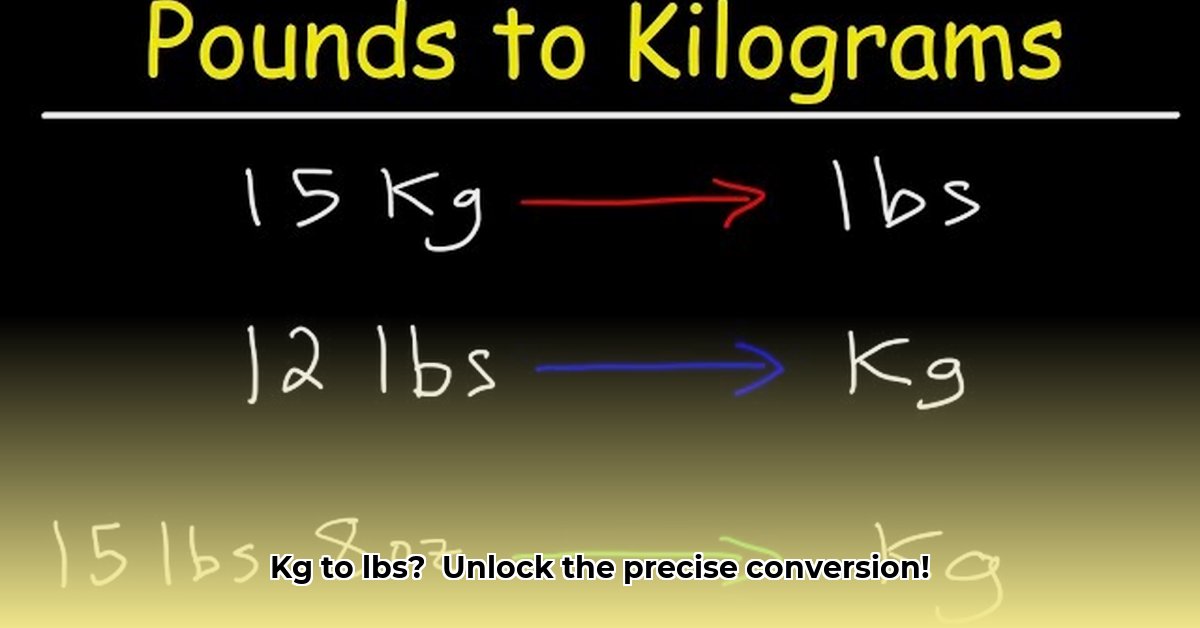
Converting 3.15 kg to lbs: Two Methods
Need to convert 3.15 kilograms to pounds? This guide offers two methods: a highly precise calculation and a quicker, everyday approach. We'll break down each step, compare results, and help you choose the best method for your needs. For more kg to lbs conversions, see this helpful resource: kg to lbs converter.
Method 1: The Precise Conversion
This method uses the exact kilogram-to-pound conversion factor (1 kg = 2.20462 lbs) for the most accurate result.
Start with the known value: You have 3.15 kg.
Apply the conversion factor: Multiply 3.15 kg by 2.20462 lbs/kg: 3.15 kg * 2.20462 lbs/kg = 6.944563 lbs
Result: 3.15 kg is precisely 6.944563 lbs. This level of precision is ideal for scientific or engineering applications where even minor discrepancies matter. A calculator is recommended for this method.
Method 2: The Everyday Estimation Method
This method utilizes a rounded conversion factor (1 kg ≈ 2.2 lbs) for easier, faster calculations suitable for everyday use.
Initial Conversion: Multiply 3.15 kg by 2.2 lbs/kg: 3.15 kg * 2.2 lbs/kg = 6.93 lbs
Isolate Whole Pounds: This gives us 6 whole pounds.
Convert the Decimal to Ounces: The remaining 0.93 lbs needs to be converted to ounces. Since 1 lb = 16 oz, multiply 0.93 lbs * 16 oz/lb ≈ 14.88 oz. Rounding up, we get approximately 15 ounces.
Final Result: Therefore, 3.15 kg is approximately 6 pounds and 15 ounces. This method is perfect for quick estimations where absolute precision isn't critical.
Comparing the Methods: Accuracy vs. Convenience
The table below summarizes the advantages and disadvantages of each method:
| Method | Conversion Factor | Result | Pros | Cons |
|---|---|---|---|---|
| Precise Method | 2.20462 | 6.944563 lbs | Highly accurate; ideal for scientific/technical use | Requires a calculator; more complex calculation |
| Everyday Estimation | 2.2 | ≈ 6 lbs 15 oz | Simple, quick; suitable for everyday tasks | Less precise; introduces a small margin of error |
Choosing the right method depends on your needs. For scientific accuracy, the precise method is essential. For everyday conversions, the estimation method offers sufficient approximation.
Key Considerations
Accuracy vs. Speed: Weigh the need for absolute precision against the convenience of a simplified calculation.
Context Matters: The appropriate method depends on the application. A recipe might tolerate a slight estimation error while an engineering project requires precise figures.
Tools: The precise method benefits from using a calculator, while the estimation method is easily performed mentally or with basic arithmetic.
Remember, the fundamental equation for conversion is: Pounds = Kilograms x Conversion Factor. Choose the conversion factor – 2.20462 for precision or 2.2 for estimation – that aligns with your requirements.